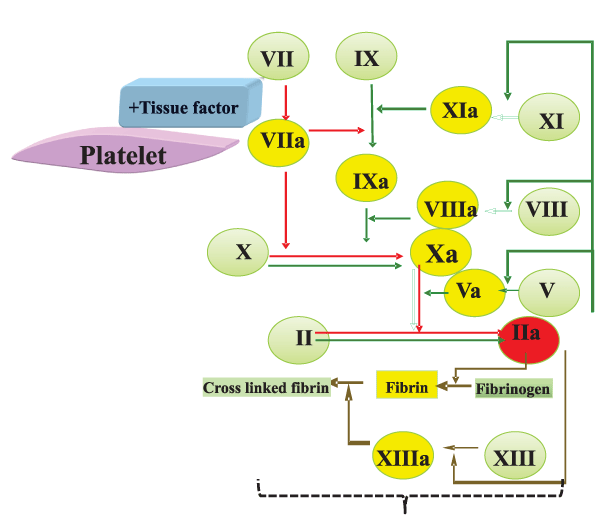
 |
| Figure 1: Blood coagulation in vivo: Mammalian blood coagulation is initiated by the exposure of membrane-bound tissue factor to factor (F) VII. Activation of FVII to the protease FVIIa results in the activation of FIX and FX by the TF–FVIIa complex. In the absence of its activated cofactor FVa, FXa generates only trace amounts of thrombin. Although insufficient to initiate significant fibrin polymerization, trace amounts of thrombin formed in this ‘initiation’ stage (red arrow) of coagulation are able to back-activate FV and FVIII by limited proteolysis, leading to the explosive generation of thrombin during the ‘propagation’ phase (green arrow) that ultimately leads to generation of a fibrin clot. During this propagation phase, FIXa and FVIIIa form the tenase complex in the presence of calcium and negatively charged phospholipid membranes to generate FXa. FXa and FVa form the prothrombinase complex to generate sufficient amounts of thrombin. This thrombin efficiently cleaves off fibrinopeptides A and B from fibrinogen, which results in the polymerization of fibrin monomers to a fibrin network. The fibrin clot is stabilized by activated FXIII (FXIIIa) (converted from its inactive form by thrombin), a transglutaminase that catalyses covalent cross-linkage of fibrinogen (Stabilization phase, brown arrow). |